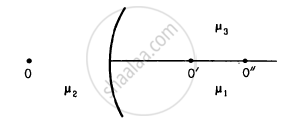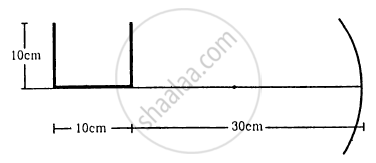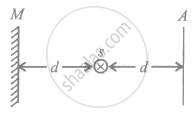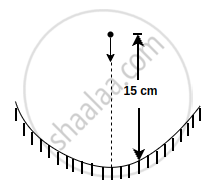Advertisements
Advertisements
प्रश्न
A car is moving with at a constant speed of 60 km h–1 on a straight road. Looking at the rear view mirror, the driver finds that the car following him is at a distance of 100 m and is approaching with a speed of 5 km h–1. In order to keep track of the car in the rear, the driver begins to glance alternatively at the rear and side mirror of his car after every 2 s till the other car overtakes. If the two cars were maintaining their speeds, which of the following statement (s) is/are correct?
पर्याय
The speed of the car in the rear is 65 km h–1.
In the side mirror the car in the rear would appear to approach with a speed of 5 km h–1 to the driver of the leading car.
In the rear view mirror the speed of the approaching car would appear to decrease as the distance between the cars decreases.
In the side mirror, the speed of the approaching car would appear to increase as the distance between the cars decreases.
उत्तर
In the side mirror, the speed of the approaching car would appear to increase as the distance between the cars decreases.
Explanation:
Object moving along the principal axis: On differentiating the mirror formula with respect to time, we get `(dv)/(dt) = - (v/u)^2 (du)/(dt) = - (f/(u - f))^2. (du)/(dt)`. where `(dv)/(dt)` is the velocity of image along the principal axis and `(du)/(dt)` is the velocity of object along the principal axis. A negative sign implies that the image, in case of mirror, always moves in the direction opposite to that of the object.
As the distance between the cars decreases, the speed of the image of the car would appear to increase.
APPEARS IN
संबंधित प्रश्न
In motor vehicles, a convex mirror is attached near the driver's seat to give him the view of the traffic behind. What is the special function of this convex mirror which a plane mirror can not do?
In image formation from spherical mirrors, only paraxial rays are considered because they
Following figure shows three transparent media of refractive indices \[\mu_1 , \mu_2 \text{ and } \mu_3\]. A point object O is placed in the medium \[\mu_2\]. If the entire medium on the right of the spherical surface has refractive index \[\mu_3\], the image forms at O". In the situation shown,

A U-shaped wire is placed before a concave mirror having radius of curvature 20 cm as shown in figure. Find the total length of the image.

A diverging lens of focal length 20 cm and a converging mirror of focal length 10 cm are placed coaxially at a separation of 5 cm. Where should an object be placed so that a real image is formed at the object itself?
Two thin lenses having optical powers of -10D and+ 6D are placed in contact with each other. The focal length of the combination is:
Answer the following question.
Three lenses of focal length +10 cm, —10 cm and +30 cm are arranged coaxially as in the figure given below. Find the position of the final image formed by the combination.

The intensity of a point source of light, S, placed at a distance d in front of a screen A, is I0 at the center of the screen. Find the light intensity at the center of the screen if a completely reflecting plane mirror M is placed at a distance d behind the source, as shown in the figure.

An object is 20 cm away from a concave mirror and it is within the focal length of the mirror. If the mirror is changed to a plane mirror, the image moves 15 cm closer to the mirror.
Focal length of the concave mirror is ______.
A particle is dropped along the axis from a height 15 cm on a concave mirror of focal length 30 cm as shown in figure. The acceleration due to gravity is 10 m/s2. Find the maximum speed of image in m/s:

